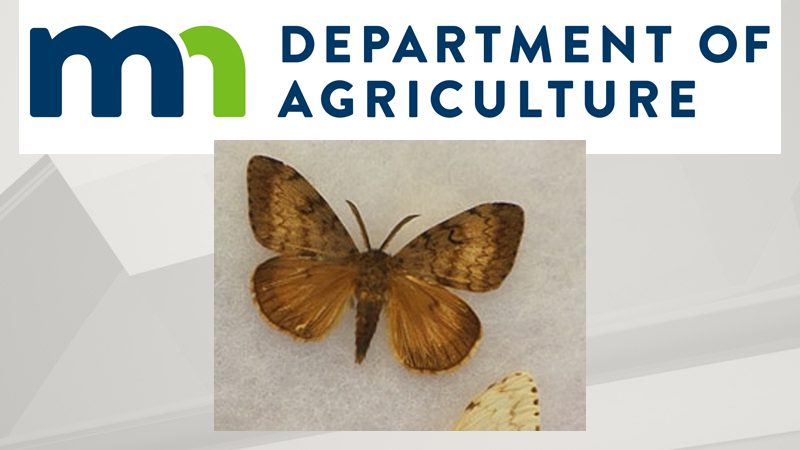MDA conducts spongy moth treatments in Carlton and St. Louis Counties July 14-17
[anvplayer video=”5185294″ station=”998130″]
Residents may see low flying planes across portions of Carlton and St. Louis counties on Friday and Monday, July 17, as the Minnesota Department of Agriculture (MDA) treats the area to slow the spread of spongy moth, formerly known as the gypsy moth.
“I would compare spongy moth advancement across the US like a forest fire. So we are working in that front line right now, and that’s where Saint Louis is kind of in that front line. So we are getting these sparks off of coming out in advance of that forest fire,” said Pest Mitigation and Regulatory Response Manager Kimberly Theilen Cremers. “We see these isolated sparks or isolated populations, and those are what we’re treating. So we’re treating those isolated populations out in that advancing front before they have an opportunity to coalesce and keep moving westward. And so we work really far in advance. Eventually, that front is going to keep pushing westward. We can’t stop it completely, but we’re trying to slow it.”
Depending on the weather, officials will conduct aerial treatments throughout the day, beginning as early as 6:30 a.m. Officials say the product is not harmful to humans, animals, birds, or other insects.
“Most individuals probably will not even notice it or see it or find it in the canopy or on the surface,” said Theilen Cremers.
According to MDA, the treatment area in Carlton County is near Holyoke along the Wisconsin border, totaling approximately 14,000 acres. There will be three areas treated around Duluth. They include Duluth East, Duluth West, and Midway for a total of approximately 12,000 acres.

Spongy Moth (previously called Gypsy Moth.) MDA, file.
Residents are able to see if their address is on an interactive map to determine if they are within any of these blocks.
According to the MDA, the treatment involves a “method of mating disruption involving the aerial application of an organically certified, waxy, food-grade substance containing pheromones specific to spongy moths that confuses the male moths.” Officials say the treatment makes it difficult for the male moths to find females for mating, resulting in fewer caterpillars hatching and attacking trees next year.
MDA times the application just as adult moths are emerging in early summer.
The yellow planes are contracted by the U.S. Forest Service in a joint project with the MDA, and will fly approximately 150 feet above the treetops. The planes do travel outside the treatment areas as they navigate between the spongy moth treatment sites.
According to MDA, the spongy moth is one of America’s most destructive tree pests. The moths are now threatening Minnesota. If present in large numbers, spongy moth caterpillars can clear large sections of forest. Oak, poplar, birch, and willow are among their preferred hosts. The moths spread slowly on their own, but people can unintentionally help them spread by transporting firewood or other items on which the moths have laid their eggs.
To help area citizens stay informed, the MDA has set up a Report a Pest information line at 1-888-545-MOTH (6684). The hotline will offer the latest details about treatment dates and times.
Contact the Minnesota Department of Agriculture at 1-888-545-6684 or ReportAPest@state.mn.us with questions regarding spongy moth and the planned treatments.